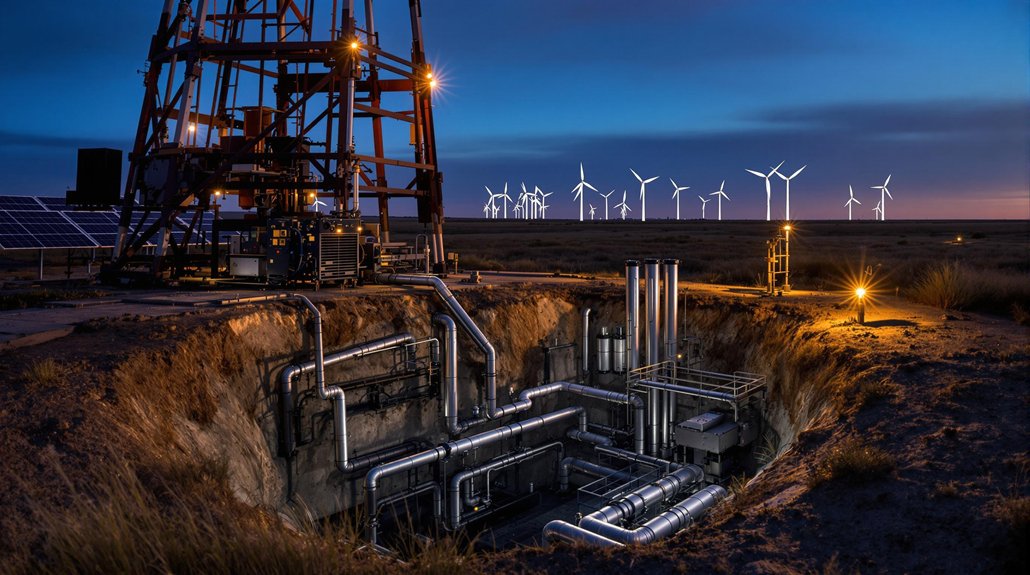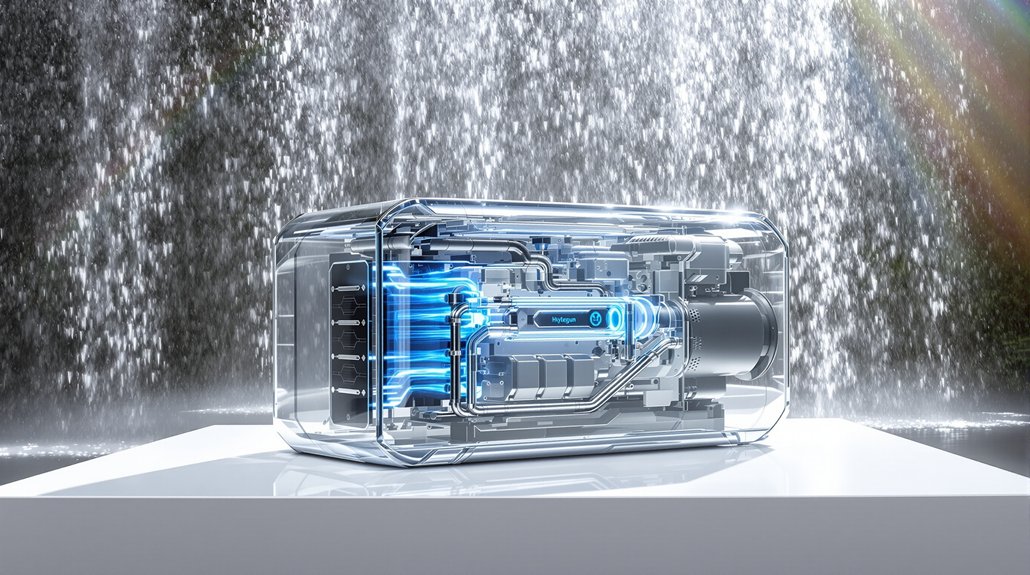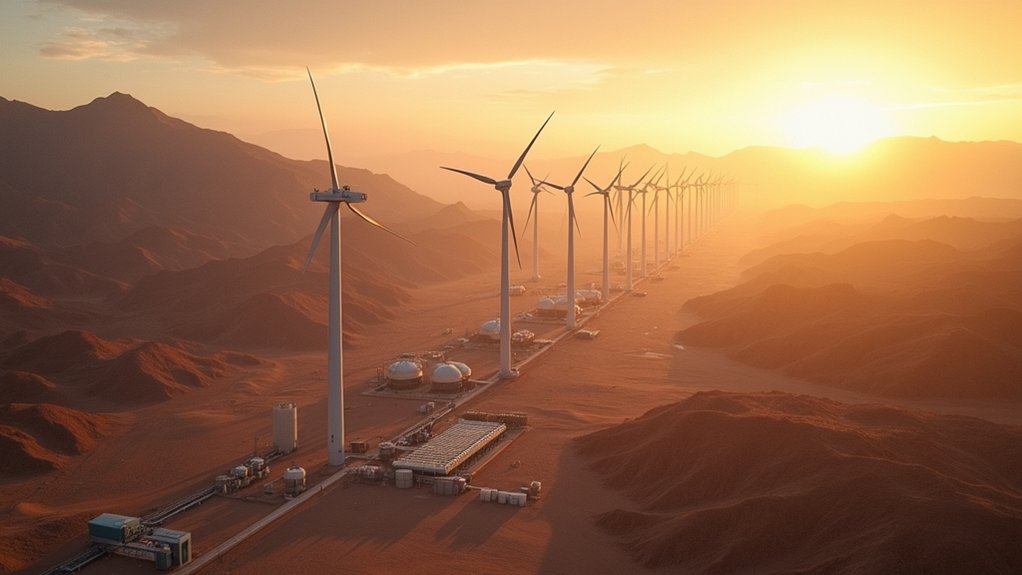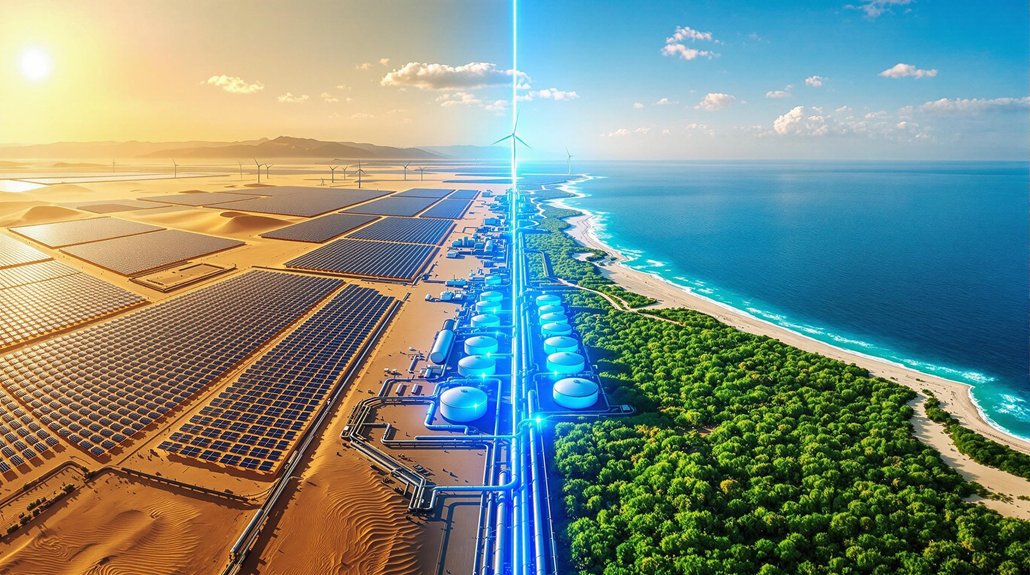Global green hydrogen alliances continue to expand worldwide, with 41 governments creating strategies as of 2023. Regional partnerships like Africa’s Green Hydrogen Alliance and Europe’s Clean Hydrogen Alliance are gaining momentum. Meanwhile, production capacity needs to grow from 1.1 gigawatts to over 5,700 gigawatts by 2050 to meet climate goals. These collaborations face challenges as Trump’s potential return raises concerns about international trade barriers that could impact this growing $2.5 trillion market.
Dozens of countries around the world are joining forces to develop green hydrogen as a clean energy solution. As of 2023, 41 governments have created hydrogen strategies to advance this technology. These alliances aim to scale up production, reduce costs, and set standards for this promising fuel source.
In Africa, six nations formed the Africa Green Hydrogen Alliance in 2022. Europe launched its Clean Hydrogen Alliance in 2020, which now has over 1,000 members. The UAE started the Abu Dhabi Hydrogen Alliance in 2021, while India announced its National Hydrogen Energy Mission that same year.
China, Japan, and the EU are leading these efforts. China deployed the world’s largest electrolyzer project in 2022, with 150 megawatts of capacity. Many countries are forming partnerships to share knowledge and resources. Australia, the Netherlands, and Japan have created bilateral agreements.
The Green Hydrogen Catapult, launched in 2020 by major developers, targets 25 gigawatts of production capacity by 2026. This initiative aims to attract $110 billion in investment. The Africa Green Hydrogen Alliance specifically focuses on mobilizing production for export while also ensuring benefits for domestic African markets. Experts suggest future alliances should pool research funds and offer risk guarantees for projects.
Currently, only 1.1 gigawatts of electrolyzer capacity exist globally. To meet climate goals, this needs to grow to 5,722 gigawatts by 2050. Manufacturers plan to build 155 gigawatts of yearly production capacity by 2030.
The potential market is huge. Green hydrogen could become a $2.5 trillion industry by 2050. Demand might reach 125-585 million tons annually. It could represent 14% of the world’s energy use.
However, challenges remain. Only 4% of announced projects have reached final investment decisions. Cost is still a barrier, and finding customers is difficult. Production requires massive amounts of renewable electricity – potentially 14,000 terawatt-hours by 2050.
Despite these hurdles, international alliances are growing. They’re working to overcome obstacles and establish green hydrogen as a key part of the clean energy shift. Current production statistics show that the Asia Pacific region leads with 93.6 kilotons of green hydrogen produced in 2023.








